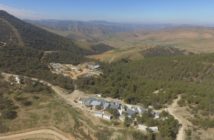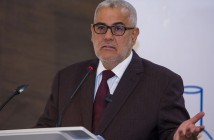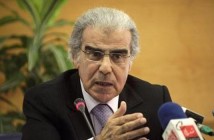By Abderrahim El Ouali
CASABLANCA, Sep 14, 2011 (IPS) – Morocco’s offer of autonomy to Western Sahara to stave off demands for full independence is boomeranging on the kingdom with other regions now demanding similar freedom.
The autonomy proposal for Western Sahara was made at the United Nations in April 2007 to resolve a movement for independence simmering in the former Spanish colony.
The proposal has been consistently rejected by the Polisario front which will settle for nothing less than independence for the resource-rich territory, annexed by Morocco in 1975.
Polisario, which fought a guerilla war until 1991 to press independence, wants the issue to be resolved through a referendum. Eight rounds of negotiations between both parties in New York have failed
But, the Moroccan initiative has encouraged activists to launch movements for autonomy in two other regions – northern Rif and Sousse in the south of the country.
In contrast to Western Sahara’s half a million people, Rif has 2.4 million inhabitants while Sousse has a population of approximately three million, according to the last official census carried out in 2004.
Both Rif and Sousse are populated by the Amazigh, an indigenous people, whose language was recognised as an official one along with Arabic under the new constitution, adopted on Jul. 1 this year.
But the problem is not just a linguistic one. “It is completely inconceivable that a single region enjoys autonomy,” Ahmed Khanboubi, Amazigh activist and researcher in political and economic sciences, told IPS.
“If autonomy is applied in one region, it has to be there in the others. Otherwise, it would amount to discrimination against other regions and citizens,” he said.
Other experts swear by the “advanced regionalisation” plan offered by King Mohamed VI in a speech on Mar. 9.
Habib Anoune, an expert in social and economic sciences, told IPS that autonomy for regions other than Western Sahara is a “long-term hypothesis which can be part of reality as well as imagination.”
Advanced regionalisation envisages division of the country into 12 regions with each one of them having an elected council, empowered to make local policies independently of the centre.
Khanboubi, however, said that regionalisation has to “emanate from citizens, to serve their interests” and not imposed on them from above. The reference was to the fact that the committee, tasked with drawing up the project, was appointed by the king and not elected democratically.
“It is necessary to take the opinion of citizens, instead of undertaking a cartographic division of the country from air-conditioned offices in Rabat,” Khanboubi said. Rabat, the capital, is 90 km north of Casablanca.
Regionalisation is not a completely new idea in Morocco. In 1971, the kingdom was divided into seven regions, and then 27 years later in 1996 King Hassan II further divided the country into 16 regions.
While a law governing regional councils was also voted in by parliament alongside, they have remained practically without any authority. “All the decisions are taken by governors,” Khanboubi said.
Governors are not elected but directly appointed by the king. The new constitution, approved in July, stipulates governors are appointed by the government.
“We have to end this supervision and let regional councils practise their full competence,” he added.
Anoune’s view is that advanced regionalisation will allow the modernisation and democratisation of the state by devolving authority from the centre to the region.
The sticking point seems to be where to draw the line on democratisation.
“The Moroccan state rushed in advanced regionalisation as a response to the movement for autonomy,” said Khanboubi. “In the future the fight for democracy will be in the regions – to establish autonomy” (END)






